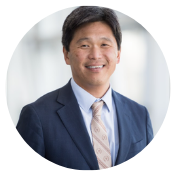A hemorrhagic or ischemic stroke is a life-changing event. In mere seconds, the world you have known is upended and usually without warning. After a stroke, you may not be able to return to work or even accomplish basic daily activities without help. You may be unable to do the things you once loved. But, just as your life was turned upside down in a matter of seconds, you have the rest of your life to recover.
Recovery is not a race. Today, we are learning the once commonly held belief that functional recovery stops at 12 months is not true. A recent Scandinavian study of patients with ruptured brain aneurysms found continued functional improvement one year after subarachnoid hemorrhage, and nearly one out of every four patients had further improvement 12-15 years later.(1)
So, when you are tempted to ask yourself, “Is this as good as it gets?” I say, “No way!”
Instead, repeat to yourself a proverb, “If you are facing in the right direction, all you have to do is keep on walking.” If I could write my patients a prescription for that, I would.
Successful stroke recovery is about taking life each day at a time and moving in small steps toward your goal(s). Set and visualize short-term goals and work hard to achieve them in physical, occupational and speech therapy. Then, as you do, set the next short-term goal. And the next.
Of course, it isn’t easy. Hard work is hard for a reason, but I am continually inspired by the grit and perseverance of my patients who refuse to accept finality, and instead put one foot in front of another and keep walking. They can and do continue to improve well beyond one year after their stroke.
The academic psychologist and author Angela Duckworth who studies “grit” says, “Grit is sticking with your future day in, day out and not just for the week, not just for the month, but for years.” I have seen it – my patients have GRIT!
The hard work of recovery is not a solo mission. Families, friends and communities must help. The stroke changed their lives, as well, and regaining that life requires full engagement. Relationships often flip after a stroke. A wife becomes a teacher, helping her husband learn to read again. A teenager becomes his mother’s caretaker. Recovery is definitely a family affair. Even the most dedicated therapist can only take a patient so far. Eventually, recovery has to move to the home. When it does, it is important to surround yourself with people who understand your needs and are supportive.
At my hospital, UF Health, we treated a captain in the sheriff’s department for stroke, while nearly 100 of his co-workers lined our Emergency Department waiting room and parking lots. That is a support group! His stroke was very severe, but the captain has returned to work and still manages a large department. There are times he stumbles on a word, but he has trained his co-workers to patiently wait while he finds a workaround word. This patient has created the world in which he needs to live.
I have read about a stroke survivor who regained use of his hand 23 years after his stroke. That can only happen with a commitment to continued recovery.(2)
So, when you are tempted to ask yourself, “Is this as good as it gets?” Tell yourself, “No way!”
I know that maintaining that hope is extremely challenging. No one expects or sees a stroke coming. The future you had envisioned is suddenly altered and changed forever. You now have to create a new vision for your life and future, living with your stroke.
There will be good days but also bad days. Not only does stroke produce physical deficits to overcome, but there is an emotional and mental toll. Nearly one out of every three survivors who have had a ruptured brain aneurysm suffer from depression.(3) So it is important to work on your mental health, not just physical improvements! This is where family and friends will play a key role. If your support systems understand depression is a possibility, they can be prepared to help.
As a young boy, I read the autobiography of the great NFL Hall of Fame running back Gale Sayers, which had a lasting impact on me. Sayers grew up in Omaha, Neb., just as I did. In his book entitled “I Am Third”, he describes his life-long motto: The Lord is first, my friends are second, and I am third. I am not preaching religious beliefs to anyone, but I think that one way to face the right direction and keep on walking is to continually remind ourselves that there is some greater purpose in life, whatever that may be, and that we are here to serve others, enjoy our friends and family, and to not forget about ourselves! I am third means to help and seek help for ourselves.
Audrey Hepburn, a British actress and humanitarian, said, “Nothing is impossible, the word itself says ‘I’m possible!’” I am continually inspired by my patients who say “No way” to the notion this is as good as it gets. I marvel and think, “Could I be as resilient and determined?”
Finally, I think it is clear that no one can do this alone. We all need our family and friends to support us. The great medical professionals, survivors and caregivers of The Aneurysm and AVM Foundation (TAAF) can also be there for you.
So take life one day at a time and remember recovery is not a race. You have your life ahead of you. Take life after stroke in small steps. As the great Dr. Martin Luther King said, “You don’t have to see the whole staircase, just take the first step.”
Click photo to learn more about Dr. Brian Hoh.
References:
- Rackauskaite D, Svanborg E, Andersson E, Löwhagen K, Csajbok L, Nellgård B. Prospective study: Long-term outcome at 12-15 years after aneurysmal subarachnoid hemorrhage. Acta Neurol Scand. 2018;138(5):400-7. Epub 2018/07/03. doi: 10.1111/ane.12980. PubMed PMID: 29963687.
- Sörös, P, Teasell, R, Hanley, D, Spence, D. Motor recovery beginning 23 years after ischemic stroke. Journal of Neurophysiology. Epub 2017/01/08 https://doi.org/10.1152/jn.00868.2016
- Tang WK, Wang L, Kwok Chu Wong G, Ungvari GS, Yasuno F, Tsoi KKF, Kim JS. Depression after Subarachnoid Hemorrhage: A Systematic Review. J Stroke. 2020;22(1):11-28. Epub 2020/02/07. doi: 10.5853/jos.2019.02103. PubMed PMID: 32027789; PMCID: PMC7005349.

